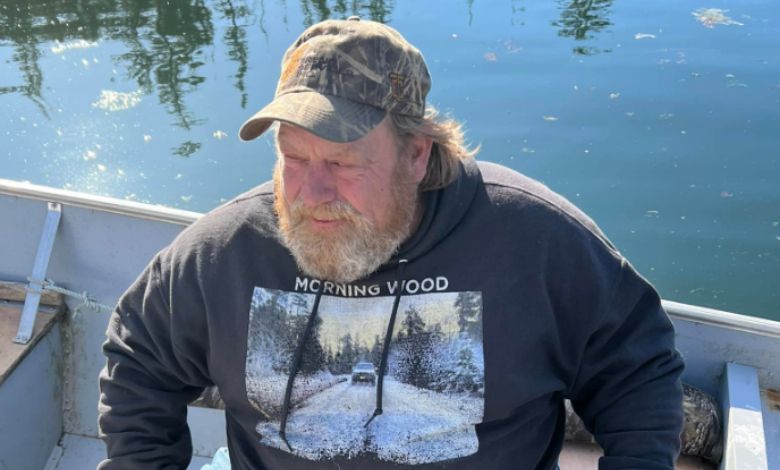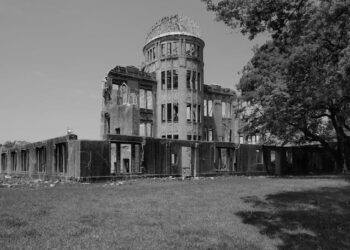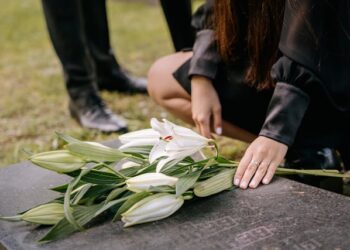What happened to Curly Leach on Port Protection: A deep dive into his journey, choices, and where life left him
If you’re searching “what happened to Curly Leach on Port Protection,” it likely means you watched or heard of the show Life Below Zero: Port Protection and wondered about the fate of one of its more intriguing residents. Curly Leach has always stood out: the quiet, self-reliant man of the wild, a realist who seemed to live under different rules. Much like the behind-the-scenes stories of unique personalities we explore in remote and extraordinary settings, Curly’s journey captures our fascination with unconventional lifestyles. So what did happen to him? Did he disappear, change, or leave? Let’s unpack it: piece by piece, fact over rumor, with a tone that treats you like a friend sitting by a campfire, swapping stories.
What You'll Discover:
Who Is Curly Leach (Timothy “Curly” Leach)?
Before we address what happened to him, it helps to root ourselves in who Curly Leach really is:a man who defies easy labels.
Early Life & Personality
Curly’s given name is Timothy Leach, though few use it. He prefers Curly. His roots trace back to Rochester, Washington. On-screen, he came into view through Life Below Zero: Port Protection, a spin-off of the Life Below Zero franchise, focused on a small, remote Alaskan community.
In contrast to many reality-TV personas, Curly tends to be secretive. His age, personal relationships, and inner motivations remain partly inscrutable even to fans.
Lifestyle & Philosophy
Curly didn’t just survive in Port Protection:he lived on his own terms.
- He rejects money as a concept. Instead of paycheck income, he trades firewood, fish, or services to get what he needs.
- His skills are practical and elemental: collecting firewood (he’s essentially the community’s woodsman), hunting, fishing, and improvising solutions in wild terrain.
- He does occasional maintenance projects:for example, there’s video footage of him jacking up his deteriorating home and making structural repairs using parts from the house itself.
- He’s deeply private. Little is known about whether he kept family ties, had children, or romantic relationships.
So with all that as background, what happened to him? Why do viewers ask the question?
“What Happened to Curly Leach?” : The Visible Shift
When you ask “what happened,” there are two dimensions: what changed on the show (narrative) and what changed in his real life (choices, relocation, or departure). Let’s examine both.
On the Show: Don’t Look Back Episode
One of the clearest narrative signals came in Season 7, Episode 10 of Port Protection, titled “Don’t Look Back.”
In that episode:
- Curly spends a final segment with a beloved old friend and seems to emotionally distance himself from the lifestyle or community he’s long inhabited.
- The narrative frames a possibility: he is leaving Port Protection, or at least preparing for “an easier life back on the grid.”
- It is treated as a turning point:less like a sudden vanishing and more like a considered transition.
This moment sparked speculation. Viewers wondered: Did Curly abandon his principles? Did he struggle physically or mentally? Did external forces force his exit?
In Real Life (As Best as We Know)
Because Curly is private, we don’t have a full public chronicle of all his moves. But from scattered accounts and community observations, we can infer some things:
- There is no indication that anything drastic “happened” to Curly (no reports of injury, death, or disappearance).
- His potential departure seems gradual:and perhaps voluntary. The show’s framing in Don’t Look Back suggests he’s choosing to leave or at least reframe his life.
- Some fan communities still list him among residents; others note that his current status is uncertain.
- His last strong on-screen presence was anchored in Episode 10 of Season 7. After that, the show’s storytelling gives fewer focal points to Curly as an active participant.
So the short answer: nothing dramatic “happened” to Curly:it’s more a story of change, exit, or slowing down. But because of the scarce public information, parts remain speculative.
Why Did Curly Leave (Or Seem to Leave)?
Transitions like this never boil down to a single cause. From what we can piece together, a mixture of internal and external pressures likely influenced his shift.
Physical & Environmental Strain
Living in remote Alaska is relentless:
- The elements bite. Harsh weather, isolation, structural wear, and limited resources push people to their limits.
- Curly’s home was known to be crumbling; he had to do structural repairs himself. This implies ongoing maintenance burden.
- As you age, the physical demands of hauling firewood, hunting, and building become harder. If Curly reached a point where risks versus rewards shifted, he might’ve adjusted course.
Emotional & Social Considerations
- Doing isolation is seldom a one-time decision. Over time, relationships (or the lack thereof), emotional fatigue, or desire for connection can nudge someone toward change.
- In Don’t Look Back, he spends time with a “beloved old friend” before leaving:indicative of emotional farewells, tying up bonds, closure.
Practical & Lifestyle Realities
- Curly’s barter economy works well in close-knit, small settings. But if resource access becomes more tenuous (fuel, supplies, medical needs), staying strictly off-grid becomes harder.
- The show’s producers and structure might have influenced his narrative arc. Reality TV often nudges storylines toward transitions:someone leaving, evolving, or shifting.
- The idea of “returning to the grid” can hint at reestablishing access to community services, health care, or convenience that wilderness life disallows.
You can imagine Curly grappling with diminishing returns: the peace and purity of wilderness weighed against the cost of maintaining it alone.
My Radical Angle: Curly’s Exit as a Mirror
Rather than seeing Curly’s departure as a “failure” or a capitulation, what if we interpret it as reflection:a mirror to many of us?
We romanticize extreme self-sufficiency and rugged independence. But when balance tilts, even the most stoic among us consider reintroducing constraints like infrastructure, community, and safety nets.
Curly might have always known this angle of impermanence. His journey suggests that even the purest commitment to the wild is negotiable when life presses. The show’s arc about leaving the grid becomes a kind of hybrid life model: a person who once walked deeply off-grid but later negotiates parts of “normalcy,” while retaining identity.
So “what happened” isn’t just “he left”:it’s that he changed. Curly’s story is a lesson in how ideals evolve, how practical needs insert themselves into philosophy, and how living extremes doesn’t always last forever.
What’s the Evidence? A Timeline
Let’s draw a simple timeline to map what we do know:
| Period | Observed Behavior / Events | Implication |
|---|---|---|
| Early seasons | Curly actively participates in community barter, firewood gathering, improvisation | Fully immersed in wild life |
| Mid seasons | Maintenance issues, physical strain, home repair scenes | Signs of wear and burden |
| Season 7, Episode 10 (“Don’t Look Back”) | Final goodbye, implied exit toward grid access | Turning point narrative |
| Post-Episode 10 | Fewer screen appearances, ambiguous current status | Possible phase-out or shift |
| External records | No reports of calamity; some listings still include him | He did not vanish tragically |
The transition is gentle, not dramatic. No cliffhanger, no known catastrophe.
Common Misconceptions & Myths
Over time, some rumors grow. Let’s debunk a few:
- Myth: Curly died or vanished mysteriously : No credible evidence supports that. His reduced presence doesn’t equal disappearance.
- Myth: He entirely rejected his earlier lifestyle in shame or failure : The narrative shows a more complex shift, not a repudiation.
- Myth: He just got tired and quit : Maybe. But “tiredness” isn’t trivial for someone hauling wood and fending off isolation. It might also be adaptation.
- Myth: He sold out or got financial backing for a home or lifestyle : There’s no solid evidence of that. He stays under the radar.
What We Can Reasonably Conclude
Putting together what we know, it seems safe to posit:
- Curly Leach voluntarily transitioned away from central life in Port Protection.
- His exit (on camera) was deliberate:expressed in memory, companionship, and conscious reframing.
- He didn’t depart in tragedy, but rather through a shift in priorities and sustainability.
- What happens next:where he lives, what he does:remains partly private, and likely always will.
What This Means for Fans & the Show
If you’re a fan, here are some takeaways and reflections:
- Don’t assume end-of-screen time equals erasure or death. Sometimes people just change direction.
- Curly’s narrative arc offers more nuance than the standard “character vanishes” trope.
- The show may continue to evolve with or without him:but his presence still colors the communal memory of Port Protection.
Key Takings
- Curly Leach is Timothy “Curly” Leach, a private, self-reliant figure from Life Below Zero: Port Protection.
- He rejects money, barters wood and services, and lives largely off-grid among extreme Alaskan conditions.
- In Season 7, Episode 10 (Don’t Look Back), the show frames his removal or departure as a turning point.
- There is no evidence he died or suffered catastrophe. His exit appears gradual and voluntary.
- Physical, emotional, practical pressures likely contributed to his shift.
- His journey reflects a broader truth: ideals evolve, and lives adapt.
- Fans should view his “disappearance” as transition, not mystery.
Additional Resources:
- Anti-Malware Engine Offline errors and solutions: Deep dive into error 2030 related to system validation failures and solutions in VM environments.





